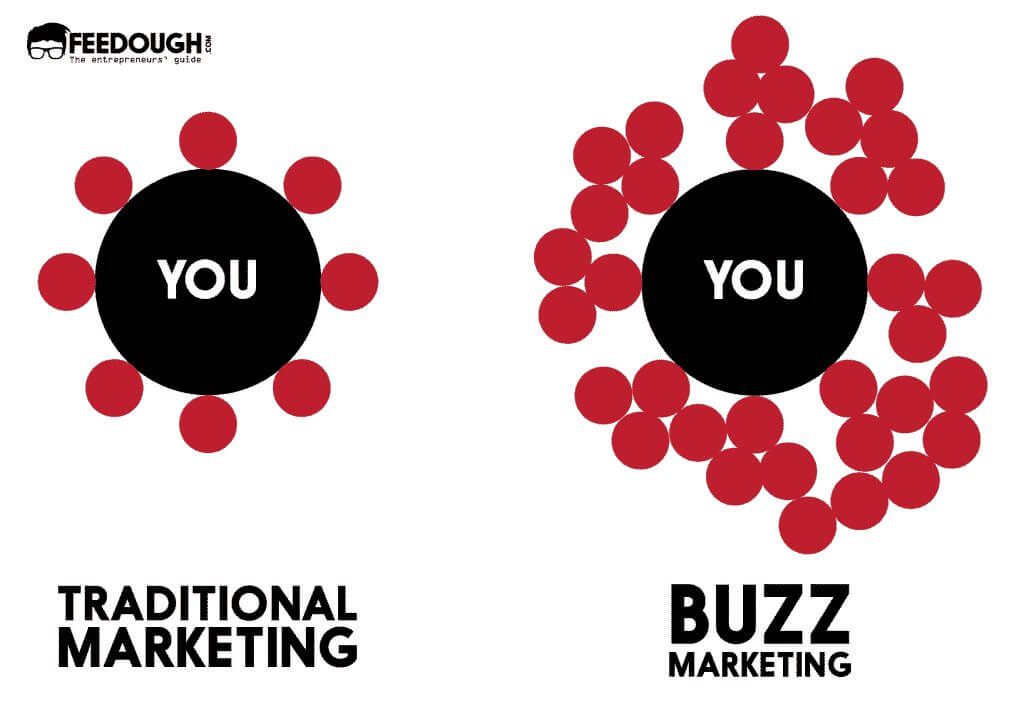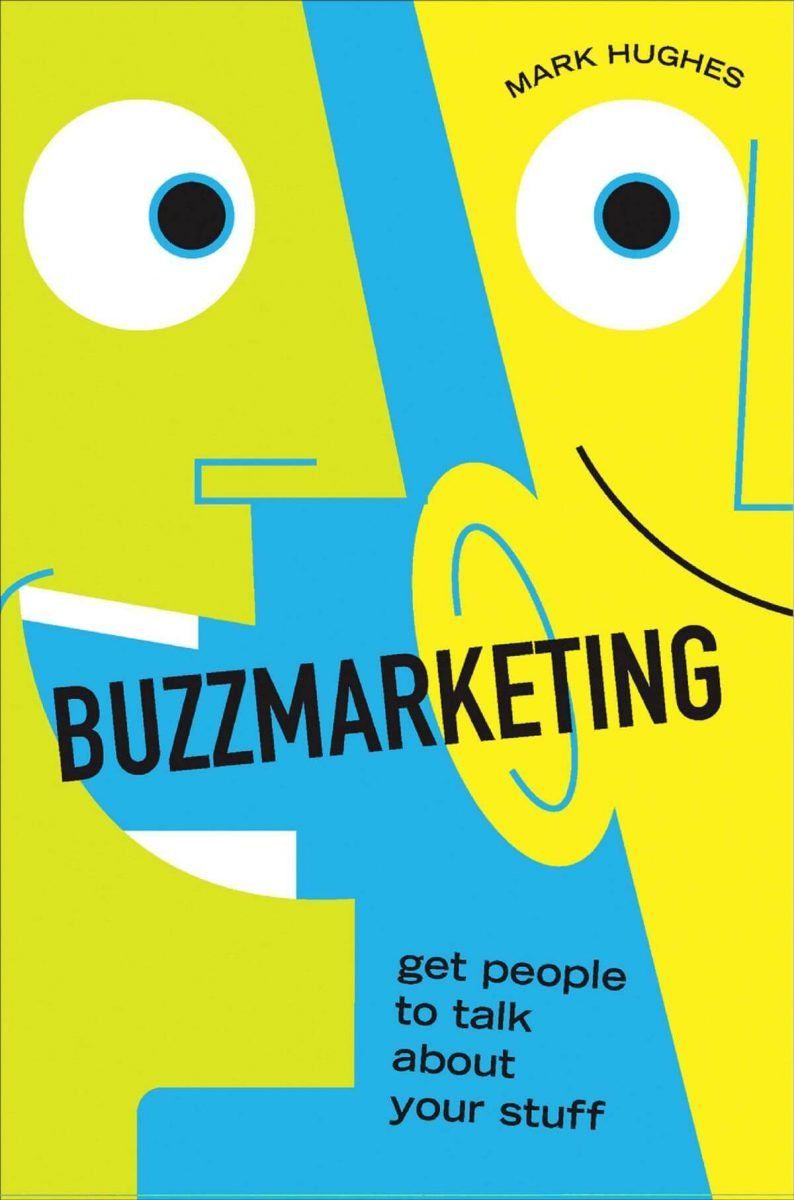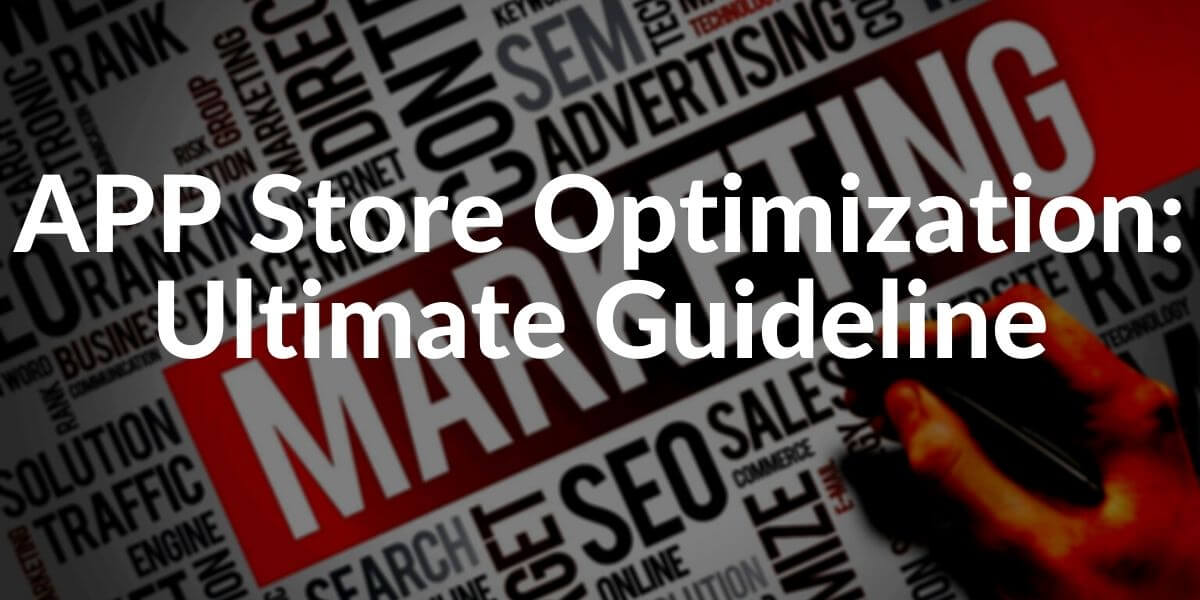Buzz marketing is a digital branch of recommendation marketing. It is closely related to word-of-mouth marketing, in German: word of mouth. This type of marketing aims to ensure that so-called buzz agents are among friends and acquaintances, but above all online, e.g. on social media platforms, talk about a product, initiate conversations and communicate recommendations.
What is the Difference Between Buzz Marketing and Viral Marketing (Word-of-mouth Marketing)?
Buzz Marketing is part of word-of-mouth marketing and overlaps with viral marketing. Word-of-mouth marketing refers to general referral marketing that can take place online and offline. It is a powerful marketing tool that turns convinced consumers into brand ambassadors, which is why the product recommendations have an above-average authentic character. Viral marketing aims at a high distribution of entertaining and original content; Here, however, the focus is on the advertising material, not the product recommendation.
Buzz Marketing, on the other hand, primarily relies on the positive review and recommendation of products. This type of word of mouth can be used offline among friends and acquaintances, but also at the bus stop or in the supermarket. Buzz Marketing unfolds its effect online through communication in forums, blogs, or social media platforms such as Facebook, Instagram, or Twitter.
To learn more about Marketing, you may read the related guidelines below.
- Flywheel Marketing Definition and Examples
- Community Management Definition and Examples
- Press Release Examples and Marketing Relation
- Guerilla Marketing Definition and Examples
What are the Methods to Perform Buzz Marketing?
“Buzz”, that is, humming, whirring talk, can be generated for marketing purposes in two methods:
1. Buzz the Company
Companies can create buzz through unusual campaigns, press releases, or PR stunts – that is, they get companies or products into conversation. Actions that are so extraordinary that a lot is communicated about them offline and online cross the boundaries of viral marketing and, depending on the type of action, resemble sensation or event marketing. An example of this is Frank Baumgartner’s jump from a height of 40 km, which was sponsored by Red Bull and at the time caused global attention for the brand.
2. Buzz via Agents
With this variant, companies recruit buzzers or buzz agents who should speak positively about a product in the digital environment. Buzz marketing via agents is also a form of advertising, but since the message is communicated through acquaintances and friends, the product recommendations are not perceived as such. The buzzers are often acquired through auditions or through relevant word-of-mouth portals. As a rule, they do not receive any remuneration, or the remuneration often consists of the products they are testing or participation in special events.
In order to take advantage of this type of marketing, so-called “buzz agents” are hired by companies. These private individuals are selected based on their place of residence or their interests and receive precise information on the target group. You work free of charge and have an independent opinion. In order to make the desired product or company public, the buzz agents spontaneously involve people from their circle of friends or, for example, those waiting at a bus stop in a seemingly innocuous conversation about the product to be advertised. He gives the impression that he is acting as a private person and consumer and has a real interest in the product.
In the ideal case, the communication of the buzzer sets a snowball effect in motion: According to David Balter, founder of the marketing agency Bzz Agents, a single buzzer reaches 15 other people. The reach is even greater on social media platforms, depending on how many followers a buzzer on Facebook or Twitter has. If the people reached to continue to talk about the product, the reach increases even further.

How to Perform Buzz Marketing?
A particularly favorable application for buzz marketing is the promotion of a new or as yet unknown product. Before the launch, buzz marketing can be used to attract specific attention. Thanks to the recommendations of the buzzer, the product is considered an insider tip even before it appears and is eagerly awaited and coveted. Before the introduction of new product lines, Buzz Marketing is also suitable for initiating a marketing campaign, e.g. a new flavor for beverage or candy manufacturers.
You may find the 5 necessities of Buzz Marketing Below:
1. Importance of Quality Product for Buzz Marketing
If your product is not helpful or interesting, you will not achieve sustainable success with a buzz marketing campaign. If consumers are disappointed, they will share it with others and your marketing campaign will fail. Also, Negative Buzz can be born from non-quality products.
2. Importance of Difference and Excitement about the Product for Buzz Marketing
Put yourself in the consumer’s position. In order for him to talk to his network about your product, there must be good reasons. Design and communicate these reasons transparently and openly.
3. Importance of Social Proof for Buzz Marketing
People always need confirmation from their environment. We all have people around us whom we trust and whose opinion is important to us. It is precisely these people that you need to get to get your message out there and do active word-of-mouth advertising for you. Depending on the industry, the strategy for this can be very different. Get in touch with the influencers and win them over.
4. Importance of Online Presence for Buzz Marketing
Buzz Marketing is primarily done online. It thrives on content being shared and disseminated in social networks. Design any content so that it can be shared with one click and actively encourage users to do so. Create incentives that bring you the reach of your customers and prospects.
5. Importance of Continuous Contact for Buzz Marketing
If you want to attract attention, one-time contact is often no longer enough in today’s fast-moving world. Get prospects to hear about you and your product in multiple locations. If you read about you in a forum, then find an article on the news portal you visit every day, and then your name appears on Instagram, you have won the undivided attention of people.

Benefits of Buzz Marketing
You may find the Benefits of Buzz Marketing below.
- Low cost: For companies, buzz marketing is a cost-effective way of marketing: In contrast to large-scale and often expensive advertising campaigns, buzzers are usually not remunerated, but they attract more attention to their communication.
- Low wastage: Buzzers often talk to people who might be interested in the product
- Attention: Conversations with acquaintances are more likely to stay in the head than advertising messages
- Trust: Consumers trust recommendations from their own circle of friends or acquaintances more than an advertising message; Buzzers’ recommendations are not seen as advertising.
- Customer Acquisition: Acquisition of new customers through the wide reach of the Buzz Agents
- Improvements: Critical feedback from buzzers can be used to optimize the product; the buzzing thus also serves as a test run, especially for new products.
What is the Negative Buzz in Buzz Marketing?
The buzzers are not forced to speak positively about the products provided. Accordingly, it is possible that the agents share criticism or negative experiences on the Internet. Companies should keep this risk in mind, as users on the Internet tend to express their dissatisfaction with companies or products, which can damage their image with a certain range – negative word-of-mouth is a death blow. For this reason, buzz marketing should be carried out at the beginning of the marketing strategy, as, as mentioned above, product optimizations can be carried out based on the feedback from the buzzers.
What is the Difference between Influencer Marketing and Buzz Marketing?
As Buzz Marketing is different from Viral Marketing, it is also different from the Influencer Marketing. In influencer marketing, the Influencer doesn’t hide its marketing purposes, he/she talks and shows his/her interest over the product and he/she doesn’t hide its financial gaining from the marketing procedure.
Influencer Marketing is that someone uses his/her influence on an audience so that the audience shall buy the targeted product or service. On the other hand, Buzz Marketing hides marketing purposes. The Buzzer doesn’t tell his/her money interest or gaining from the marketing procedure. In this context, the consumer thinks that the Buzzer Agent is an objective experience teller about a service or product.
5 Buzz Marketing Examples for Better Explaining
On average, a person is exposed to 5,000 Marketing Messages a day. The main difference between Buzz Marketing from Traditional Marketing is that it makes the consumer feel the need to communicate with another consumer. The tone of communication should be for Buzz Marketing to highlight its targeted product. Below, you can see 5 different Buzz Marketing Campaigns and how they enable the consumer to communicate with the consumer.
1. Coca Cola Causes Obesity Commercial for Buzz Marketing
In this example, Coca Cola said that “our product” causes obesity in an honest manner. The commercial caused an explosion of interest. People spoke about the ad in every blog, news, and newspaper, with respect for advertising and honesty, which created the conditions for “Buzz Marketing”. You may watch the commercial below.
2. Tiger Woods Jesus Shot, EA Games Buzz Marketing Example
In this example, EA Games has created a Buzz Marketing Case for Tiger Woods PGA Tour 08 game. Tiger Woods walked on the water and hit a golf ball. On the screen, it is written, “Walking on water is not a bug, he can do this because it is so good.” Thus, players have completed the final phase of Buzz Marketing by communicating with each other with a feature added to the game.
3. Mini Cooper Boxes In Amsterdam for 99€ Commercial for Buzz Marketing
The Mini Cooper launched a Buzz Marketing Campaign by dropping the boxes with 99 € to Amsterdam, hinting that anyone who could carry the box could own the vehicle. The campaign made for YIlbaşı increased the Buzz Marketing effect even more.
4. Starbucks and Always-on Buzz Marketing Example
Starbucks conducts most of its marketing activities in the form of “Word of Mouth”. This inevitably includes Buzz Marketing concepts and methods. For Starbucks, Buzz Marketing is a continuous marketing activity. For example, the company writes the names of its customers on the cups, gives loyalty cards to its loyal customers, designs the coffee houses in the most comfortable way, and gives free wi-fi creates a Buzz Marketing effect.
Many Starbucks customers are part of the Buzz Marketing activity by sharing their Starbucks cups on Instagram and Facebook, Twitter. You may see some of the examples below.

5. BlendTec’s Will It Blend? Videos and Buzz Marketing
In this study conducted within the scope of Buzz Marketing, a scientist breaks it up in a blender to introduce new products. How long the product will be crushed or grinded is of interest to the consumer. The main purpose here is to make the product talk and explain more in the concept of Content Marketing. The buzz Marketing situation is when people actively share, speak and promote the same product. You may see an example for “Amazon Echo”.
Last Thoughts on Buzz Marketing and Holistic SEO
Buzz Marketing, Word of Mouth, Influencer Marketing, Content Marketing are related terms to each other. Understanding the marketing terms and their relationships for each other with real-world examples and terminology information will help a Holistic SEO for Branding Campaigns. Google, Bing, Yandex, Apple, or other types of Search Engines always care about real-world entities. Thanks to Buzz Marketing, an SEO can empower his/her marketing campaigns, Entity Reputation, and Brand Authority for both users and Search Engine Algorithms.
Our Buzz Marketing Guideline will continue to be improved.
- Sliding Window - August 12, 2024
- B2P Marketing: How it Works, Benefits, and Strategies - April 26, 2024
- SEO for Casino Websites: A SEO Case Study for the Bet and Gamble Industry - February 5, 2024



Great content, Koray. Thanks for writing it.
Thank you, Fahd.